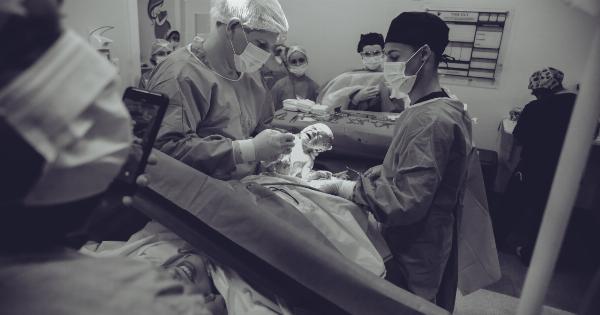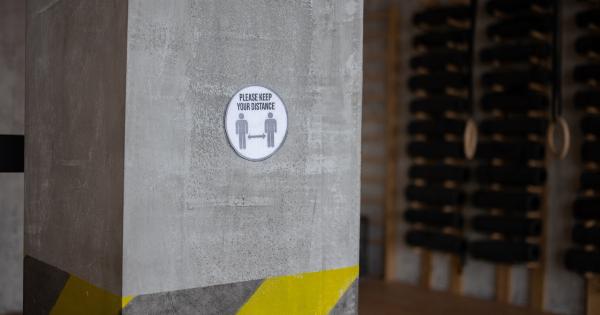An emergency C-section, also known as an emergency cesarean section, is a surgical procedure performed when there are complications during labor and vaginal delivery becomes unsafe or impossible.
It involves making an incision in the abdomen and uterus to deliver the baby.
Reasons for Emergency C-Sections
There are various reasons why an emergency C-section might be necessary:.
- Fetal Distress: If the baby is showing signs of distress, such as an abnormal heart rate, an emergency C-section may be required to expedite delivery and avoid potential complications.
- Placenta Complications: Placenta previa (when the placenta covers the cervix) or placental abruption (premature separation of the placenta from the uterine wall) may necessitate an emergency C-section to protect the health of both the mother and the baby.
- Prolonged Labor: If labor isn’t progressing appropriately or if the mother becomes too exhausted to continue pushing, an emergency C-section may be performed to ensure a safe delivery.
- Uterine Rupture: In rare cases, the uterus may rupture during labor, leading to life-threatening conditions for both the mother and the baby. Emergency C-section is the only solution in such situations.
The Procedure
When an emergency C-section is deemed necessary, the following steps are typically involved:.
- Preparation: The mother will be prepped for surgery, which includes cleaning the abdomen and administering anesthesia (usually spinal or epidural) to numb the lower half of the body while keeping the mother awake.
- Incision: A horizontal incision (bikini cut) or a vertical incision (classical cut) is made in the lower abdomen, and then the uterus is also incised to reach the baby.
- Baby Delivery: The surgeon carefully delivers the baby through the incisions, taking care to prevent any potential harm.
- Placenta Removal: After the baby is delivered, the placenta will be removed from the uterus.
- Closure: The incisions made in both the abdomen and uterus are stitched up, often with dissolvable stitches.
Recovery after an Emergency C-Section
Recovering from an emergency C-section may take longer compared to a vaginal delivery. Here are some important aspects of recovery:.
- Pain Management: Pain medication, both oral and intravenous, will be provided to help manage post-operative pain.
- Mobility: It might take a while for the mother to be able to walk and move around comfortably after the surgery. Slowly increasing physical activity is usually recommended.
- Mental Health Support: Emotional and psychological support is vital during the recovery period. It’s common for mothers to experience a range of emotions, including stress and disappointment, after an unplanned C-section.
- Incision Care: Keeping the incision clean and dry is crucial to prevent infection. Oral antibiotics may be prescribed to reduce the risk of infection.
- Breastfeeding: It’s usually possible to breastfeed after a C-section, although it may take a little longer to establish a comfortable nursing routine.
Potential Complications of Emergency C-Sections
While emergency C-sections are generally safe, they do carry potential risks and complications:.
- Infection: There’s a risk of infection at the incision site or within the uterus.
- Blood Loss: Excessive bleeding during the procedure or afterward can occur.
- Blood Clots: The risk of blood clots forming in the legs or lungs is slightly elevated following a C-section.
- Injury to Organs: Accidental injury to nearby organs, such as the bladder or intestines, can happen during the surgery.
- Adverse Reaction to Anesthesia: Some individuals may experience an allergic reaction or other complications related to anesthesia.
Coping with the Emotional Impact
Undergoing an emergency C-section can be emotionally challenging for the mother.
It’s important to seek support from loved ones, join support groups, or consult a mental health professional to process any negative emotions and anxieties that may arise.
Conclusion
Emergency C-sections are sometimes necessary to ensure the safety and well-being of both the mother and the baby. While it is a surgical procedure with potential risks, it can be life-saving in critical situations.
Understanding the reasons, the procedure involved, recovery process, and possible complications associated with emergency C-sections can help expectant mothers be prepared for any potential outcomes and make informed decisions about their birthing plans.






























